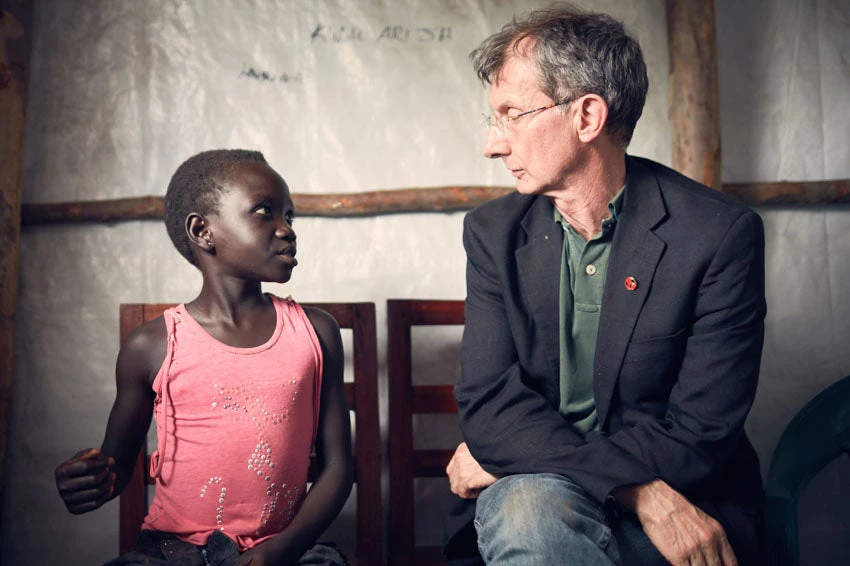
Value for money is the defining international aid mantra of our age – and rightly so. These are fiscally straitened times in donor economies. We need to ensure that every last aid dollar delivers results for the world’s poorest people. But what price do you put on hope?
That’s a question I hope donors ask themselves after gathering in June 2017 in Kampala, Uganda for a Solidarity Summit on refugees convened by the President of Uganda, Yoweri K. Museveni, and the UN Secretary General, Antonio Guterres. The international community pledged $352 million, which Guterres said was a good start.
We have, in front of us, an opportunity to tackle an education crisis starving half-a-million South Sudanese refugee children of hope. These children and their parents understand the value of learning. They see education as a passport to a better future.
More than one million South Sudanese refugees, the vast majority women and children, have fled across the border into northern Uganda, most of them in the last year. Uganda’s response has been a case study in generosity. Refugee arrivals are provided with land, seeds and tools. There are provisions for freedom of movement. They can use local services, including health and education.
Uganda has acted with compassion. But the strains are beginning to show. The West Nile region, where most refugees are settling, has some of the highest poverty rates and worst social indicators in the country.
During a recent visit to a refugee settlement in West Nile, I met Daniel, a quietly spoken but fiercely smart 14-year-old. He had lost his father. His mother and sister had been abducted by armed militia. Daniel fled to the Ugandan border wearing just the clothes on his back and carrying his most prized possession – a science book he grabbed from his school before leaving.
“Now I have lost everything I have to keep learning for my future,” he told me.
I also met Rosa, aged 16, and her younger sister Vicky. Their parents had taken them to the road heading to Uganda and told them to walk. Apart from fear for their safety, that agonizing decision was driven by a concern for the girls’ education. Their parents believed Uganda offered the best chance of continued schooling.
Almost all the refugee children and parents I met wanted to get back into school. Having lost everything, they see learning as an asset no one can take away from them. They know that literacy, numeracy and the skills they gain at school matter for their future. Their ambition, resilience, and sheer drive for education is both awe inspiring and humbling.
But these are children facing daunting barriers. Most are out of school, either because there is no school close enough to where they live, or because their parents can’t afford to pay the fees. Primary classes are massively over-crowded. And, most refugees are being taught in English rather than their home language.
At the current and projected rate of refugee arrivals, there could be as many as 1 million South Sudanese refugee children denied an education by 2020. This prompts one of those value for money questions. What would it take to get every one of South Sudan’s refugee children into a decent learning environment?
The state of refugee education in northern Uganda reflects a deeper malaise. As Gordon Brown, the UN’s Special Envoy for Global Education, has pointed out, education typically represents a tiny share – less than two percent – of humanitarian aid.
A recent Save the Children report estimates that it would cost $132 million annually over three years to deliver universal education to South Sudanese refugee children in Uganda, covering early learning, primary and secondary school. One third of this amount would be earmarked for system strengthening and host communities.
Well within the realms of affordability, there are a range of financing options that could be drawn on. What it might deliver is half a chance for a generation of refugee children to rebuild their lives, learn in a safe environment, and gain the skills they need to flourish. It will provide refugee parents with what every parent reading this wants for their children – the opportunities that come with education.
Above all, it will deliver hope.
*Names have been changed to protect identities.
Kevin Watkins is Chief Executive at Save the Children UK. The views of guest bloggers do not necessarily reflect the views of the World Bank.


Join the Conversation